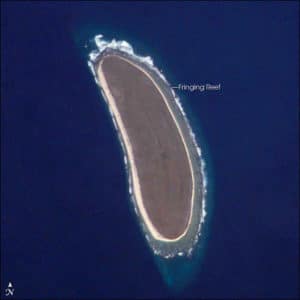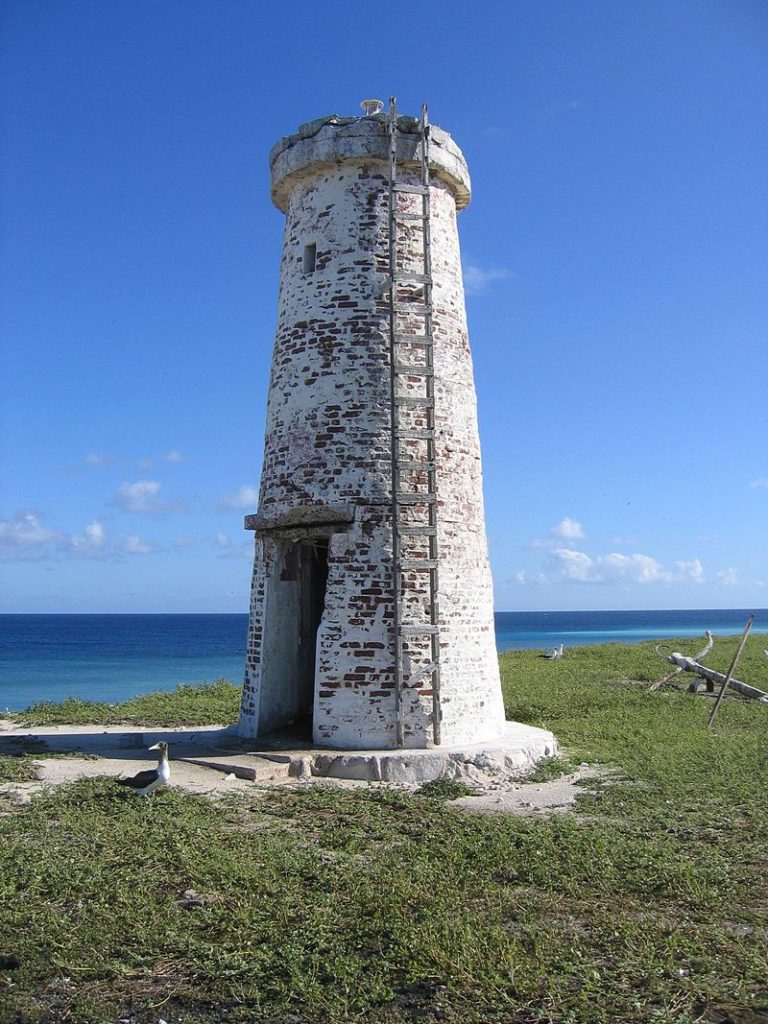
U.S. Possession and Guano Mining:
Howland Island was uninhabited when the United States took possession of it under the Guano Islands Act of 1856. The island was a known navigation hazard for many decades and several ships were wrecked there. Its guano deposits were mined by American companies from about 1857 until October 1878, although not without controversy.
Captain Geo. E. Netcher of the Isabella informed Captain Taylor of its discovery. As Taylor had discovered another guano island in the Indian Ocean, they agreed to share the benefits of the guano on the two islands. Taylor put Netcher in communication with Alfred G. Benson, president of the American Guano Company, which was incorporated in 1857. Other entrepreneurs were approached as George and Matthew Howland, who later became members of the United States Guano Company, engaged Mr. Stetson to visit the Island on the ship Rousseau under Captain Pope. Mr. Stetson arrived on the Island in 1854 and described it as being occupied by birds and a plague of rats.
The American Guano Company established claims in respect to Baker Island and Jarvis Island which was recognized under the U.S. Guano Islands Act of 1856. Benson tried to interest the American Guano Company in the Howland Island deposits; however the company directors considered they already had sufficient deposits. In October 1857 the American Guano Company sent Benson’s son Arthur to Baker and Jarvis Islands to survey the guano deposits. He also visited Howland Island and took samples of the guano. Subsequently, Alfred G. Benson resigned from the American Guano Company and together with Netcher, Taylor and George W. Benson formed the United States Guano Company to exploit the guano on Howland Island, with this claim being recognized under the U.S. Guano Islands Act of 1856.
However, when the United States Guano Company dispatched a vessel in 1859 to mine the guano they found that Howland Island was already occupied by men sent there by the American Guano Company. The companies ended up in New York state court, with the American Guano Company arguing that United States Guano Company had in effect abandoned the island, since the continual possession and actual occupation required for ownership by the Guano Islands Act did not occur. The end result was that both companies were allowed to mine the guano deposits, which were substantially depleted by October 1878.
In the late 19th century there were British claims on the island, as well as attempts at setting up mining. John T. Arundel and Company, a British firm using laborers from the Cook Islands and Niue, occupied the island from 1886 to 1891.
To clarify American sovereignty, Executive Order 7368 was issued on May 13, 1936.
Itascatown 1935–1942:
In 1935, colonists from the American Equatorial Islands Colonization Project arrived on the island to establish a permanent U.S. presence in the Central Pacific. It began with a rotating group of four alumni and students from the Kamehameha School for Boys, a private school in Honolulu. Although the recruits had signed on as part of a scientific expedition and expected to spend their three-month assignment collecting botanical and biological samples, once out to sea they were told, “Your names will go down in history” and that the islands would become “famous air bases in a route that will connect Australia with California“.
